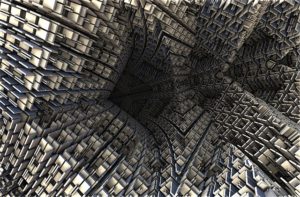Virtual Reality and the E-reader
Charlotte Schaefer, Leganto Customer Success Specialist, Ex Libris
The limitations of the screen have long been a stumbling block for academic e-reading. As Chan Li has noted,* recursive reading is particularly difficult in the digital world.
In a physical space, students lay out multiple sources, and shift their focus from one to the other. Comparing passages and flipping between materials or appendices is easily accomplished.
Spatial memory plays a significant role in ease of use. A reader can often picture how far into the source they were when they came across a certain fact or glance at the number of post-its sticking out of a book and remember how useful they found the source. How many times have you thought “It was in the thin book with the green canvas cover, just before the center and across from that diagram I didn’t quite understand”? Human memory is complex and attaches to a wide variety of senses.
Traditional electronic materials remove most of these memory attachment points. On a two-dimensional screen, all books have the same thickness. A scroll bar and a percentage marker are no substitute for the weight of pages in your hands, and flipping to a new tab or switching windows requires significantly more effort than turning your head to glance from source to source. The interruption cost of doing something as simple as switching from a web browser to a PDF reader is surprisingly high, and students have enough external interruptions to deal with; adding additional ones to their research and study processes is a losing proposition. There needs to be a way to bring the advantages of spatial memory and sensory perception to electronic media.
Virtual Reality and its sister technology, Augmented Reality, do exactly that. They add the spatial component that electronic media has traditionally lacked. In fact, they greatly expand the options available to the reader. Students are no longer limited to the surface of a desk or study table; they can spread their sources out across multiple dimensions unrestricted by gravity or the laws of physics. Spatial and other sense memory are back on the table (so to speak), and the additional benefits of electronic reading – search, collate, collect, copy, paste – come into play in new, ever more powerful ways.
Whenever we speak about virtual or augmented reality, the specter of hardware, in terms of both cost and access, looms large. In the short term, it’s a reasonable concern; while most students have smart phones with limited VR capabilities, powerful AR/VR systems are still under-developed and prohibitively expensive. However, the same thing was said about smart phones, and today, almost exactly 10 years after the debut of the iPhone, smart phones have become so ubiquitous that it’s surprising when a student doesn’t have one. At the end of the day, VR and AR solve many of the challenges facing academic e-reading and present exciting new opportunities. The platforms are being developed and costs are dropping rapidly. Virtual reality is right around the corner and it is going to take e-reading to a whole new level.
* Chan Li, “The Future of Academic E-reading, Still a Long Way to Go” (http://blog.exlibrisgroup.com/the-future-of-academic-e-reading-still-a-long-way-to-go)
Charlotte Schaefer is part of the Ex Libris Teaching & Learning team, serving as the Leganto Customer Success Specialist.
The post Virtual Reality and the E-reader appeared first on Ex Libris Initiatives.
Source: buki rss
Prijašnje verzije članka:
There are no revisions for this post.

